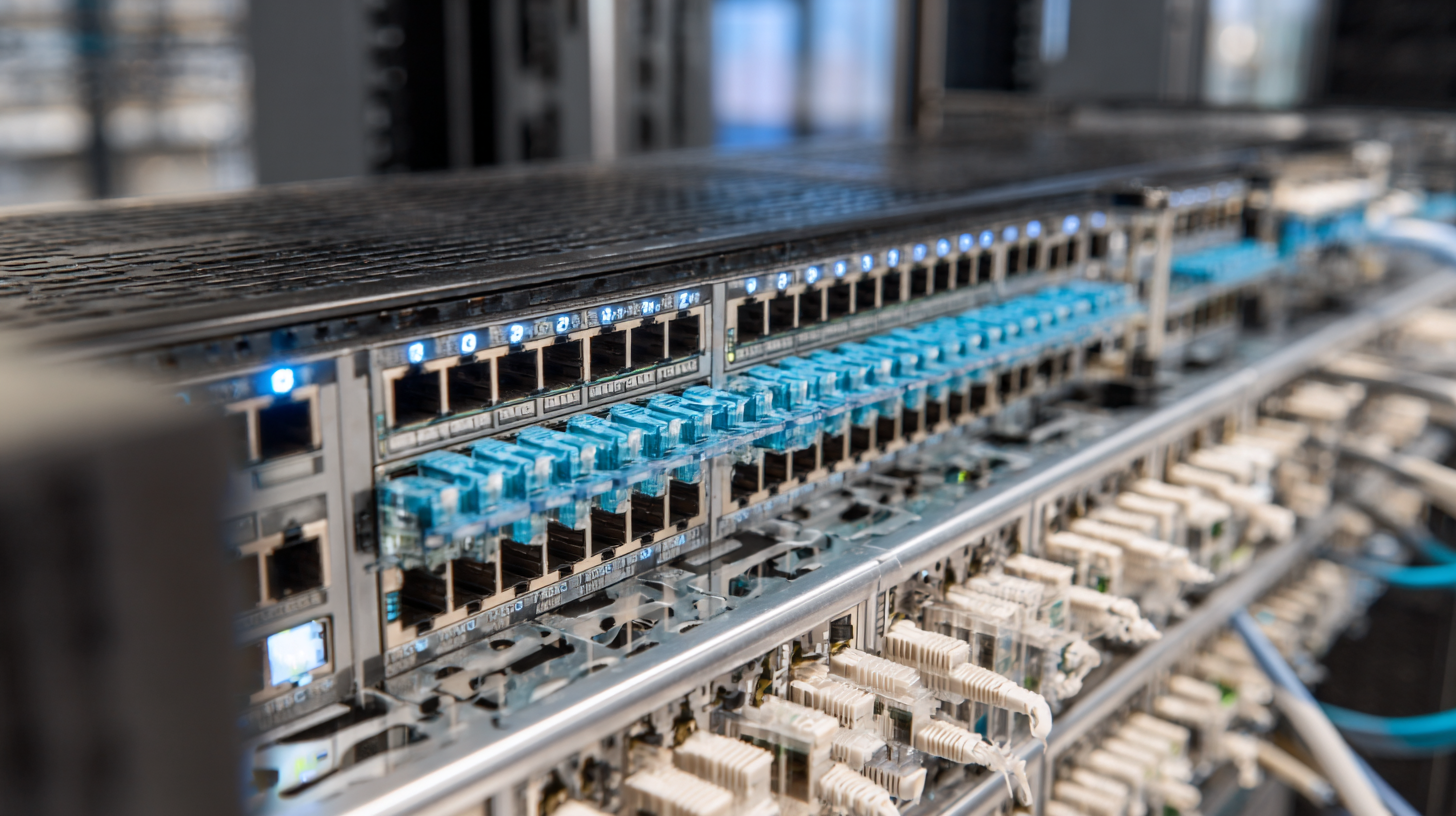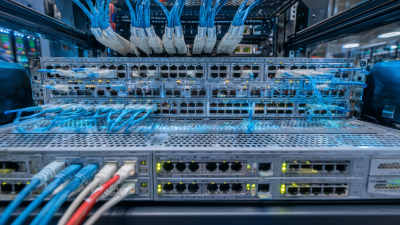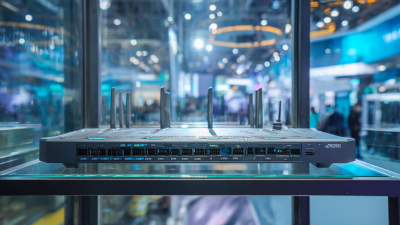
- hasivo@hasivo.com
- Mon - Sat at 7:00AM to 9:00PM
Leave Your Message

In today's rapidly evolving technological landscape, optimizing network performance is more critical than ever. As organizations strive to enhance their connectivity and streamline their operations, managed switches have emerged as indispensable tools. Renowned networking expert Jane Doe, a leading figure in the managed switch industry, emphasizes, "Transitioning to managed switches is not just about improving network efficiency; it’s about future-proofing your infrastructure." This insight underscores the significance of integrating managed switches for ongoing network optimization.
Managed switches not only provide advanced features such as VLANs, network monitoring, and traffic management, but they also empower IT professionals to gain greater control over their networks. By facilitating smooth communication between devices and ensuring optimal bandwidth allocation, these switches play a pivotal role in supporting the ever-growing demands of modern enterprises. In this article, we will explore the numerous advantages of utilizing managed switches and how they can transform network environments, enhancing both performance and reliability.

Managed switches play a crucial role in enhancing network performance and scalability, making them an essential component in modern networking solutions. One of the primary benefits of using managed switches is their ability to provide advanced traffic management features. These switches allow for VLAN segmentation, enabling the isolation of different network segments, which optimizes bandwidth usage and enhances security. With Quality of Service (QoS) settings, network administrators can prioritize critical applications, ensuring that essential services receive the bandwidth they need without being affected by less important traffic.
Moreover, managed switches offer enhanced monitoring and diagnostics capabilities that contribute to improved network reliability. Through SNMP (Simple Network Management Protocol) and other monitoring tools, IT teams can gain insights into network performance, detect potential issues before they escalate, and make data-driven decisions for capacity planning. This heightened visibility into network traffic and performance leads to more efficient resource allocation and reduces downtime, enabling organizations to scale their operations seamlessly as they grow. In today’s fast-paced digital environment, the flexibility and robustness of managed switches are indispensable for achieving high network performance and supporting future scalability.
| Feature | Description | Benefits |
|---|---|---|
| VLAN Support | Allows the segmentation of network traffic for different departments or user groups. | Improves security and reduces broadcast traffic. |
| Quality of Service (QoS) | Prioritizes certain types of traffic to ensure quality performance for critical applications. | Enhances performance for voice, video, and other bandwidth-sensitive applications. |
| Remote Management | Allows configuration and troubleshooting of switches from a remote location. | Reduces downtime and enhances efficiency in network management. |
| Port Mirroring | Enables the monitoring of network traffic for analysis and troubleshooting. | Aids in detecting performance issues and enhances security auditing. |
| Link Aggregation | Combines multiple network connections to increase bandwidth and provide redundancy. | Improves performance and reliability of connections. |
| Stacking Capability | Allows multiple switches to be interconnected and managed as a single unit. | Simplifies management and improves scalability of network expansions. |
 In today's rapidly evolving enterprise environments, the choice between managed and unmanaged switches is crucial for optimizing network performance. Managed switches offer enhanced capabilities such as advanced traffic management, robust security features, and sophisticated monitoring tools. These functionalities enable IT teams to fine-tune network performance, accommodate heavy data loads, and ensure seamless communication across devices, making them particularly beneficial for organizations with complex networking needs.
In today's rapidly evolving enterprise environments, the choice between managed and unmanaged switches is crucial for optimizing network performance. Managed switches offer enhanced capabilities such as advanced traffic management, robust security features, and sophisticated monitoring tools. These functionalities enable IT teams to fine-tune network performance, accommodate heavy data loads, and ensure seamless communication across devices, making them particularly beneficial for organizations with complex networking needs.
Conversely, unmanaged switches provide simplicity and cost-effectiveness, which can be advantageous for smaller organizations with less demanding networking requirements. However, they lack the customization and control that managed switches provide. As the Global Industrial Ethernet Switch Market continues to expand, anticipated to reach $6.8 billion by 2032, organizations must carefully assess their specific networking demands. The comparative analysis of managed versus unmanaged switches reveals that while unmanaged switches may seem appealing for their lower initial investment, the long-term benefits of managed switches in terms of scalability, security, and management capabilities can significantly outweigh their costs in environments that require higher levels of network reliability.
Implementing managed switches in modern networks presents a compelling case for long-term cost savings and operational efficiency. According to a recent report by the International Data Corporation (IDC), organizations can realize up to a 30% reduction in network downtime when utilizing managed switches. This decrease not only mitigates potential revenue loss during outages but also enhances overall productivity, as employees can maintain seamless access to critical resources.
Moreover, the total cost of ownership (TCO) for managed switches can be significantly lower compared to unmanaged alternatives. A study by Gartner indicates that over a five-year period, businesses that invest in managed switches may experience a 40% decrease in maintenance and support costs due to their proactive network management capabilities. Features such as VLAN tagging, network monitoring, and traffic prioritization allow for more efficient use of resources, leading to improved bandwidth management and reduced need for additional hardware investments. These financial advantages make managed switches a strategic choice for modern businesses aiming to optimize their network infrastructure while keeping costs under control.
 Managed switches play a pivotal role in enhancing network security for modern organizations. Unlike unmanaged switches, managed switches provide advanced features such as VLANs (Virtual Local Area Networks), access control lists (ACLs), and traffic monitoring capabilities. VLANs isolate sensitive data traffic, which minimizes the risk of data breaches. By segmenting the network, managed switches can help in controlling who accesses what resources, thereby preventing unauthorized access.
Managed switches play a pivotal role in enhancing network security for modern organizations. Unlike unmanaged switches, managed switches provide advanced features such as VLANs (Virtual Local Area Networks), access control lists (ACLs), and traffic monitoring capabilities. VLANs isolate sensitive data traffic, which minimizes the risk of data breaches. By segmenting the network, managed switches can help in controlling who accesses what resources, thereby preventing unauthorized access.
Furthermore, managed switches allow for the implementation of Quality of Service (QoS) policies, which prioritize critical applications and reduce the likelihood of congestion-related issues. With built-in security protocols like 802.1X for port-based access control, organizations can enforce strict authentication measures for devices attempting to connect to the network. This multi-layered security approach ensures that only authorized users gain access, significantly reducing vulnerabilities in the network infrastructure. In an era where cybersecurity is of utmost importance, the adoption of managed switches proves essential for building a robust and secure networking environment.
Managed switches play a critical role in modern network optimization, allowing businesses to manage their network traffic more effectively. Real-world case studies illustrate the tangible benefits these devices bring to organizations. For instance, a tech company implemented managed switches to enhance their workflow, resulting in a 30% increase in data transfer speeds while significantly reducing latency. This improvement enabled teams to collaborate more efficiently, especially when handling large files and real-time applications.
Tip: When selecting managed switches, consider the scalability of your network. Choosing switches that can be easily upgraded or expanded ensures that your infrastructure can grow alongside your business needs.
Another case study highlights a hospital that adopted managed switches to streamline their patient data systems. By prioritizing traffic for critical applications like patient monitoring, the hospital was able to minimize downtimes and enhance overall service quality. The impact was not just on operational efficiency; it also contributed to improved patient outcomes by ensuring timely access to vital information.
Tip: Regularly review and analyze your network performance metrics to identify bottlenecks. This data can help in adjusting configurations on your managed switches to further optimize network traffic flow.





